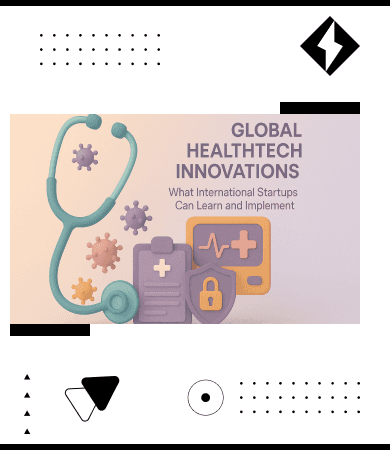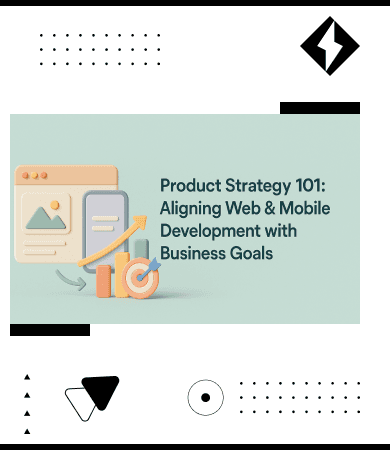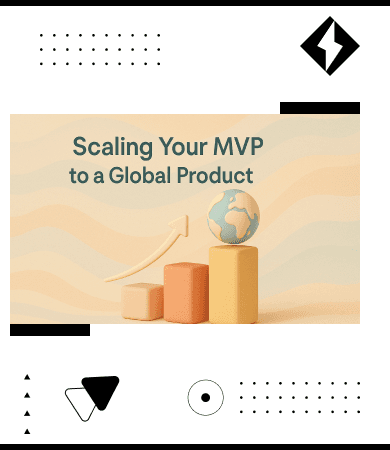Support center +91 97257 89197
MVP DevelopmentMarch 11, 2023
The MVP Development Playbook for Startups: A Proven Formula for Success

Starting a new venture, akin to a rollercoaster ride, brings with it the exhilaration of ascents and the trepidation of plunges. However, the modern business ecosystem equips entrepreneurs with tools to mitigate some of the risks, and one of those key tools is the MVP or Minimum Viable Product. An MVP serves as a safety harness, ensuring that businesses don't invest excessively in features or services that don't resonate with their audience. Instead, they launch a trimmed-down version, catering primarily to early adopters, and then refine based on real-world feedback. 🚀
Demystifying MVP
Before delving into the nuances of MVP and its profound impact on startups, let's address some fundamental questions:
-
What is an MVP or a Minimum Viable Product?
MVP stands for Minimum Viable Product. It's not just a product; it's a strategic process. Entrepreneurs create a minimalistic version of their product, incorporating only those features deemed crucial by early users. This way, they can present their idea, gather feedback, and then iterate for broader market release. -
How do you develop an MVP?
MVP development, especially in the software realm, is systematic. It's not about merely trimming features but about intelligent selection. Here's a more detailed look at the stages:
1️⃣ Conceptualization 🤔
- Problem Identification: Before you seek solutions, pinpoint the problems. Understanding user pain points forms the cornerstone of impactful MVPs.
- Feature Listing: From the myriad of features you'd like to have, zero in on the must-haves for your MVP.
2️⃣ Design and Prototyping 🎨
- User Flow Mapping: How will your user navigate the product? What's their journey like? This stage is about charting that path.
- Wireframing: A visual representation, wireframes give a skeletal structure to your product, highlighting key elements.
- Prototyping: A click-through model lets you see how your MVP feels, providing a glimpse into the user experience.
3️⃣ Development 👨🏻💻
- Tech Stack Selection: The backbone of your MVP. Whether it's MERN, MEAN, or LAMP, the choice depends on your product's needs.
- Agile Approach: MVP development thrives on agility. Regular sprints and feedback loops ensure that the product aligns with user needs.
4️⃣ Deployment 🚀 and Feedback 📢
- Beta Launch: Before a full-fledged launch, a beta version targeting a limited audience can provide rich insights.
- Feedback Channels: Set up mechanisms like surveys, feedback forms, or direct interactions to gather user responses.
-
Evolving from MVP:
An MVP isn't the end but a significant milestone in a product's journey. Based on user feedback, market dynamics, and technological advancements, the MVP paves the way for a comprehensive, full-fledged product.
Significance of MVP in the Startup Sphere
1️⃣ Cost Efficacy:
MVP is about being judicious with resources. Instead of pouring funds into myriad features, startups can focus on core functionalities, ensuring more controlled expenditure.
2️⃣ Market Validation:
A hit in the boardroom isn't always a hit in the real world. MVPs allow businesses to test the waters, ensuring their product meets genuine market needs.
3️⃣ Rapid Deployment:
In the fiercely competitive startup domain, speed is of the essence. MVPs, with their focus on essentials, ensure faster go-to-market times.
4️⃣ Customer Feedback as a Beacon:
MVPs change the narrative from "This is what we think you need" to "Tell us what you need." This customer-centric approach is invaluable in building products that resonate.
5️⃣ Triumph Tales:
Uber, Dropbox, Airbnb—behind many success stories lay a humble MVP. These MVPs weren't just bare-bones versions but carefully crafted products targeting early adopters, which were then iterated to global acclaim.
Concluding Thoughts
In the grand tapestry of business, MVPs are like those initial sketches an artist makes—fundamental, insightful, and pivotal in crafting the masterpiece. By investing in an MVP, startups not only hedge their bets but also set the stage for informed, user-centric development.
At our agency, we've seen the transformative power of MVPs firsthand. Our journey with an EV logi-tech startup, where we went from ideation to MVP in just 8 weeks, culminating in them raising a significant investment, is a testament to that.
Explore our case study and the journey.
Thank you for investing your time with us. If the world of MVPs intrigues you or if you're keen on embarking on such a journey yourself, our doors (and inboxes) are always open. 📧
TLDR
Starting a new business can be risky, but using an MVP (Minimum Viable Product) helps mitigate some of those risks. An MVP is a basic version of a product with only the essential features, targeted at early adopters. This allows businesses to gauge user response and refine the product based on real-world feedback. The MVP process involves stages like conceptualization, design, development, and deployment. MVPs are crucial for startups because they are cost-effective, help in market validation, ensure rapid deployment, and prioritize customer feedback. Successful companies like Uber and Airbnb started with MVPs. The blog also highlights an agency's experience in developing an MVP for a logi-tech startup.
FAQs
An MVP, or Minimum Viable Product, is a basic version of a product with just the essential features. It allows startups to present their idea to early adopters, gather feedback, and refine the product for a broader market release.
MVPs help startups test their product in the real world without investing heavily. They aid in cost-saving, market validation, quick deployment, and harnessing direct customer feedback to make necessary improvements.
An MVP is a minimalistic version of a product, focusing only on the core features deemed essential by early users. A full-fledged product is a comprehensive version that's developed after iterating the MVP based on feedback and market demands.
Yes, companies like Uber, Dropbox, and Airbnb initially launched MVPs, gathering feedback and iterating before achieving global acclaim.
MVP development involves stages such as conceptualization (identifying the problem and key features), design and prototyping (mapping user flow, wireframing, and creating prototypes), development (selecting tech stack and adopting an agile approach), and deployment (launching a beta version and gathering feedback).
Work with us







